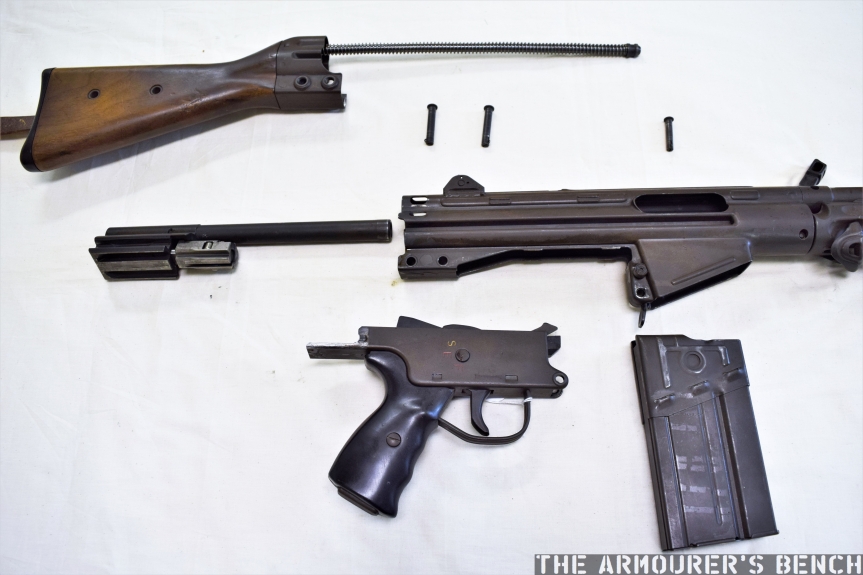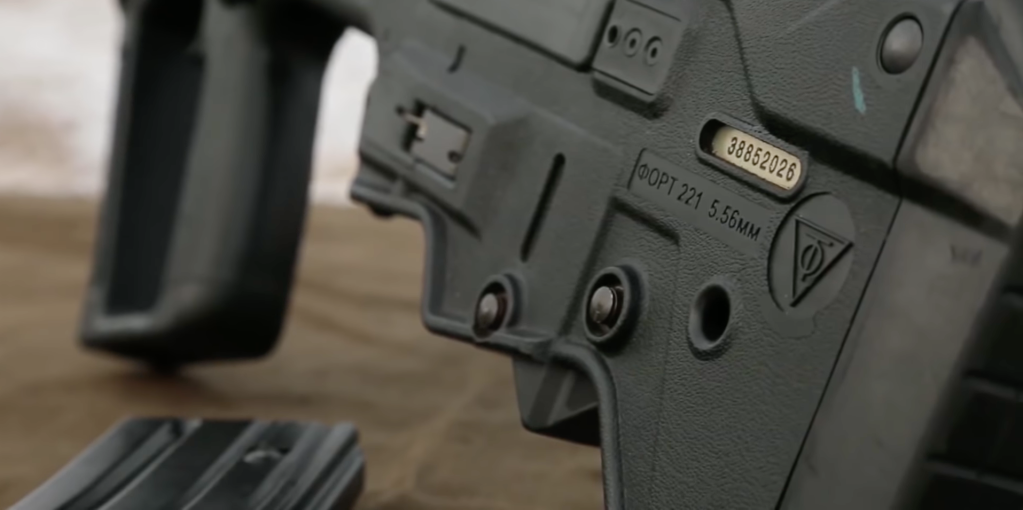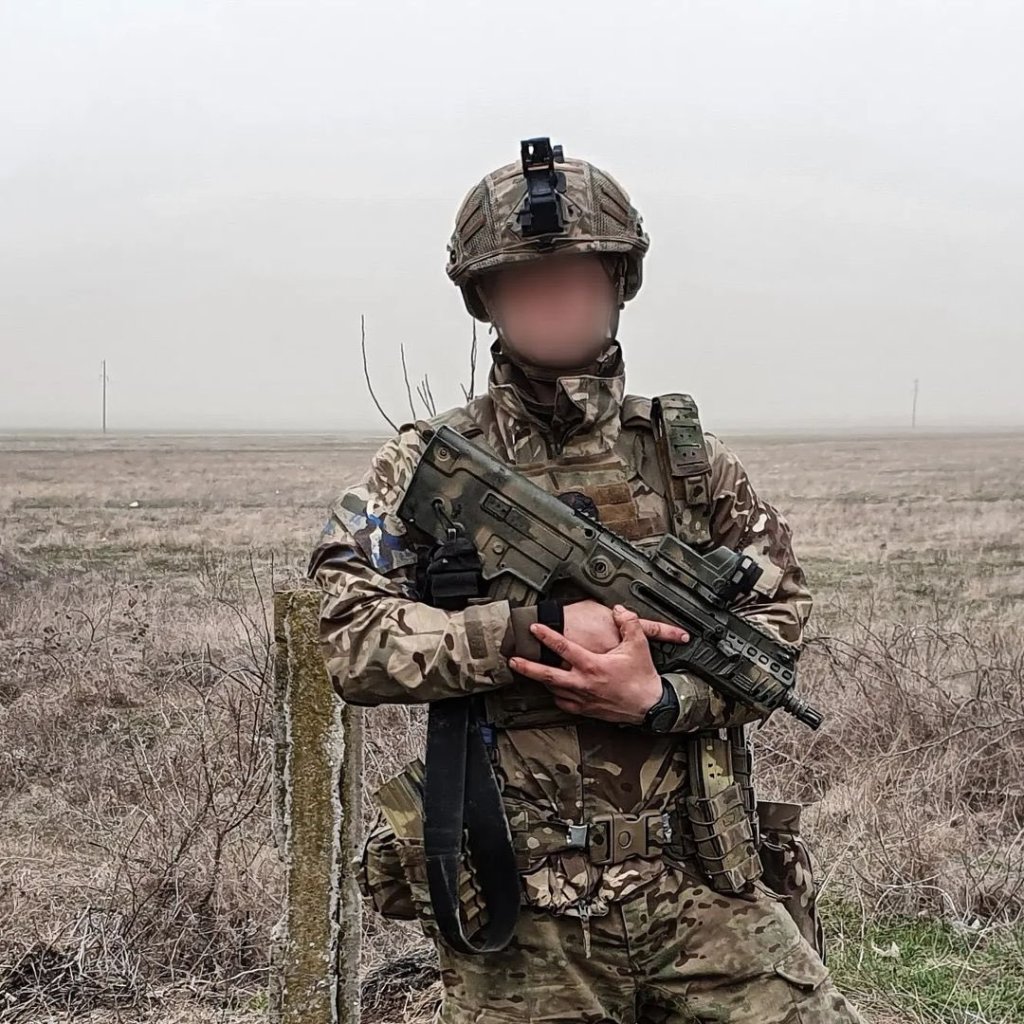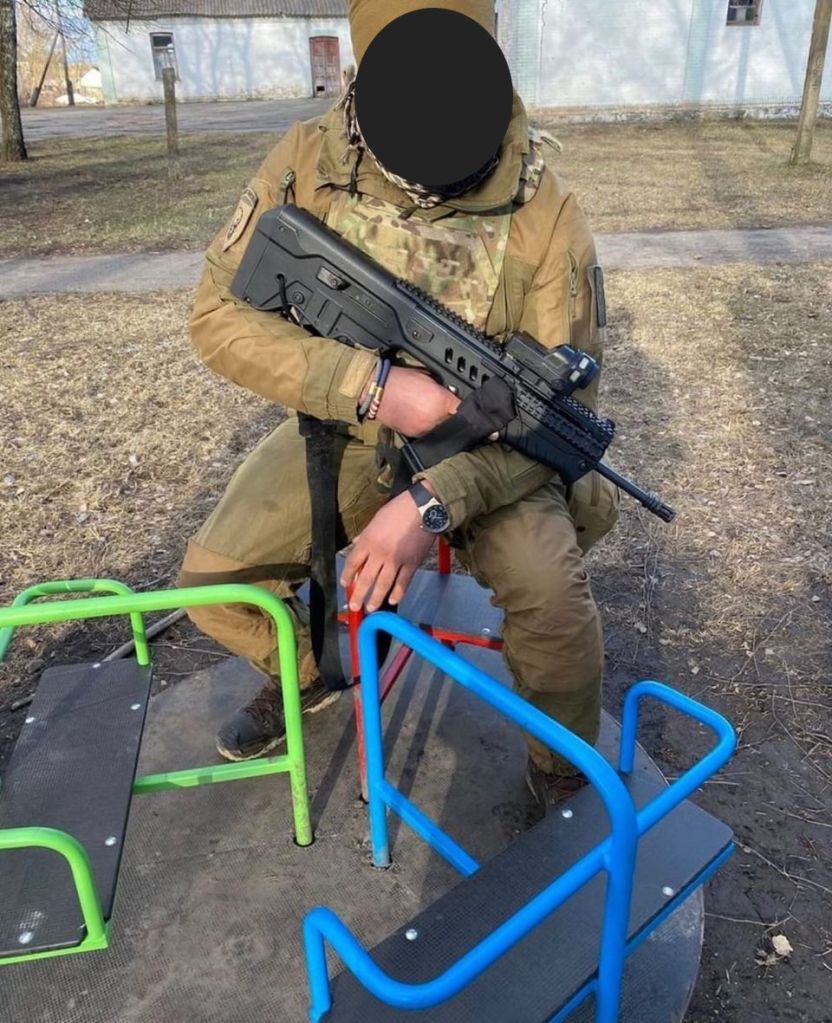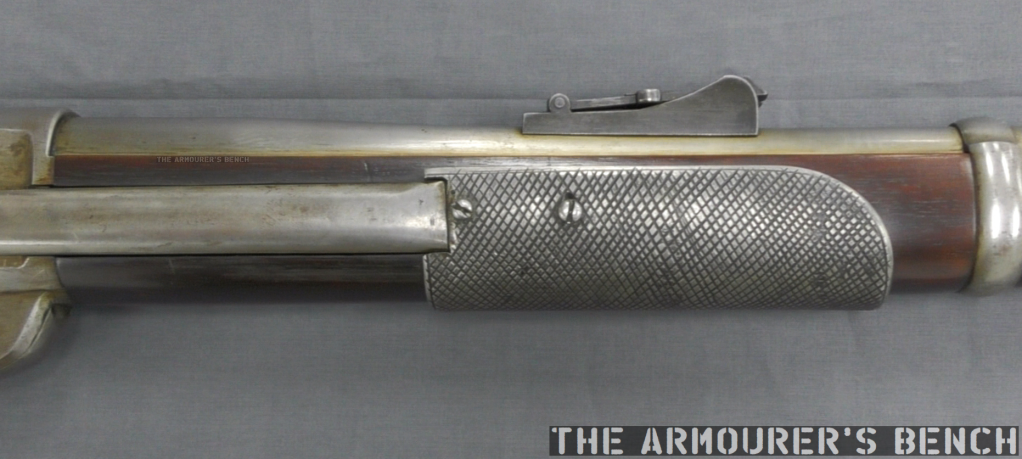The MkIV is the missing link between the most utilitarian Sten, the MkIII, and the final iteration – the wooden-stocked MkV. Very little is known about the MkIVs development and more archival research is needed.
The weapon was on display at the Morphy Auctions booth. While they couldn’t disclose which collection it was on consignment from, they noted it was believe to have been brought home by what they described as ‘a US Commando’. Not the clearest provenance but more might be explained in the auction catalogue when it publishes in a couple of months’ time.
There are several variants of the MkIV – what have become known as the MkIVA and MkIVB. This weapon is one of three examples of suppressed MkIVAs, the others are in the Royal Armouries’ collection.

The Royal Armouries also has unsuppressed examples of the MkIVA and MkIVB. This is an unsuppressed MkIVA. I couldn’t find any decent resolution photographs of the MkIVB but as you can see it has its pistol grip and trigger assembly moved forward significantly.
The gun appears to have been using a Sten MkII receiver and its magazine housing is marked as such. Interestingly, it doesn’t have a MkII serial number, instead it is marked ‘3’. This is similar to one of the MkIV’s held by the Royal Armouries. On the underside of the magazine housing is a further serial number ‘R83297’. Morphy’s noted that they believed the gun, or the MkII receiver used to make it, was produced by BSA.
The trigger mechanism has been moved forward about 1 inch (2.5cm) and unlike any other Sten is enclosed by a large bow trigger guard, suitable for cold weather use with gloves. The unsuppressed MkIVA has a 3.5 inch barrel tipped with a conical flash hider, however, this example is suppressed with what Peter Laidler, in his Sten book, mentions is an MG-D 3748 silencer designed by the Armament Design Department.
One of the most interesting differences is the shorter cocking handle slot in the receiver and the different design of cocking handle. The receiver has been shortened as has the Mk4’s barrel – which has six small ports drilled into it. This gun’s cocking handle is reportedly designed to be rotated 90 degrees to lock the bolt in the forward position. This is a departure from the earlier locking method of pushing the cocking handle down to lock into a hole in the other side of the receiver.
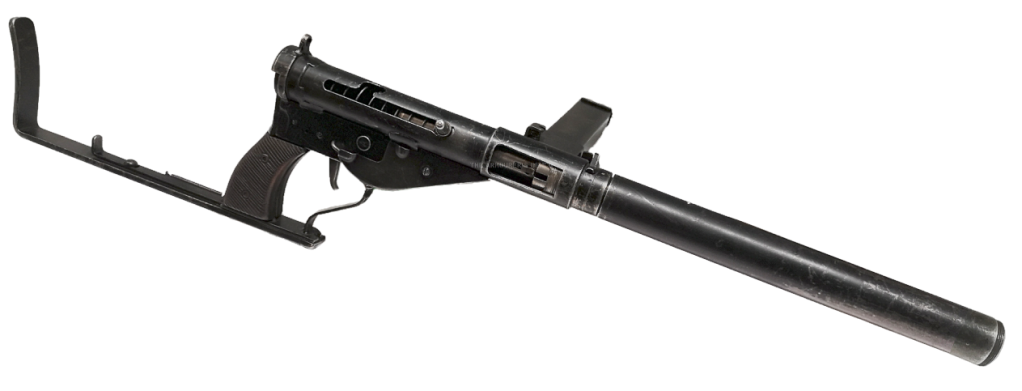
The other most distinguishable feature is the folding stock. This design is shared by the A and B variants and is made of a tick steel bar which pivots. The pivot point is in line with the front of the pistol grip. To deploy or fold the stock a small spring-loaded catch is pull towards the butt, this allows the stock to be pivoted through 180-degrees to the left. While the catch locks positively, if the small coil spring which provides tension was damaged the stock would unlock making it difficult to use. The coil spring is also exposed which could allow it to snag on things or become clogged with mud.
But who was the MkIV designed for? According to FWA Hobart’s book on submachine guns the MkIV was developed for airborne troops – a prior to this paratroops had dropped with the stock removed from their Stens. Hobart suggests that the MkIV guns were abandoned because they didn’t fare well in trials due to a high, uncontrollable rate of fire. Whatever the reason they never entered service and only a handful of prototypes were made.
Thank you to Morphy Auctions for letting me take a look at the MkIV – its set to be on sale at their upcoming Firearms Auction in April.
One thing I’m looking forward to doing this year is doing some archival work, digging into the surviving records regarding the Sten and hopefully uncovering more on the MkIV.
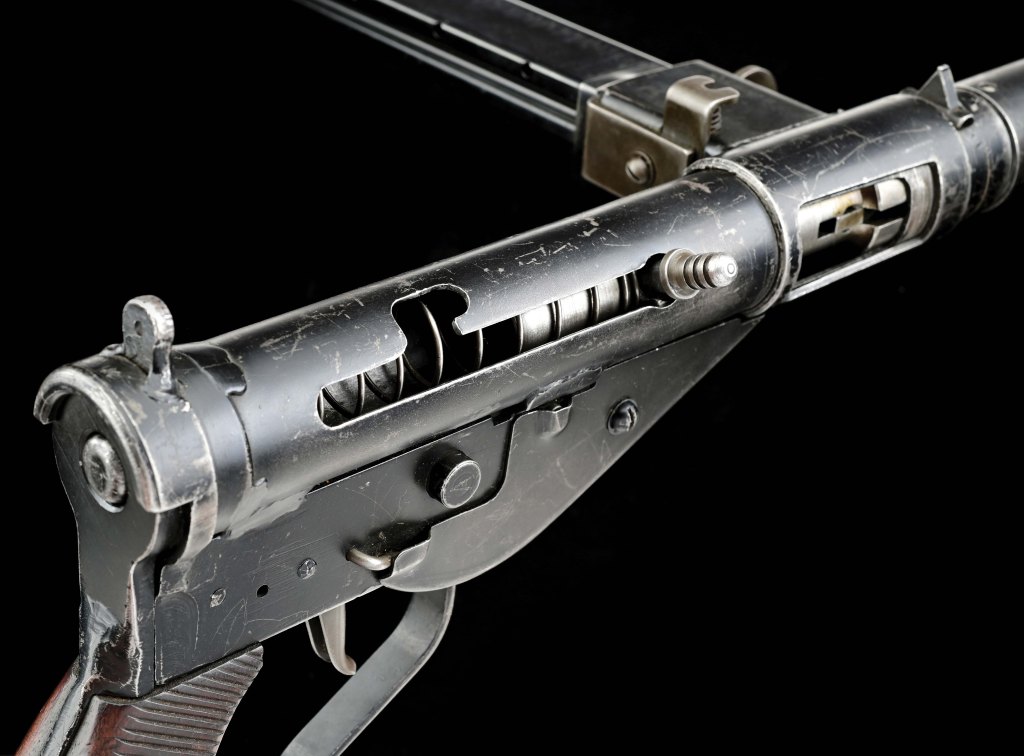
Update – 01/03/23: Morphy’s auction listing for the weapon has been published and offers some detail on the Sten’s origins and some excellent photographs. Below is an extract detailing the Sten’s provenance:
“This particular specimen was issued to an American officer who was training in England and was intended to be landed in Japan as part of pre-invasion operations in 1945. According to the officer at the time of the gun’s purchase, when the invasion was called off the authorities never asked for the gun’s return. The officer brought the gun back to the United States and subsequently registered it with the BATF.”
Ian over at Forgotten Weapons has also had a chance to look over the weapon and shoot it. Well worth checking those videos out.
Bibliography:
Special thanks to my friend Hrachya Hayrapetyan for helping with the ad-hoc filming of this video!
Entries in the Royal Armouries collection catalogue: 1 2 3 4
STEN MkIV (Prototype), Historical Firearms.info, (source)
Experimental STENs, Firearms Curiosa, (source)
The Sten Machine Carbine, P. Laidler, (2000)
Pictorial History of the Submachine Gun, F.W.A. Hobart, (1971)
Support Us: If you enjoyed this video and article please consider supporting our work here. We have some great perks available for Patreon Supporters – including early access to custom stickers and early access to videos! Thank you for your support!

